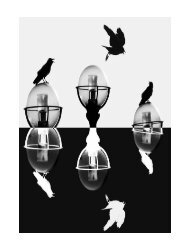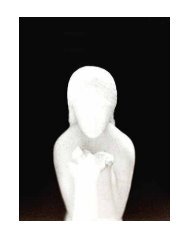Odds and Ends Essays, Blogs, Internet Discussions, Interviews and Miscellany
Collected essays, blogs, internet discussions, interviews and miscellany, from 2005 - 2020
Collected essays, blogs, internet discussions, interviews and miscellany, from 2005 - 2020
Create successful ePaper yourself
Turn your PDF publications into a flip-book with our unique Google optimized e-Paper software.
Reznikoff, Oppen and Niedecker to present day practitioners like Ron Silliman and Rae Armantrout, who aredespite
“Language” writing’s alleged focus on the textual and non-referential-empiricists at heart.
British poetry in the twentieth century doesn’t really possess anything like this clear lineage, despite contrary
flourishes (some of Lawrence’s poems, for example). “Avant-garde” poets from Dylan Thomas and David Jones,
through W. S. Graham, Hugh MacDiarmid and Basil Bunting down to contemporary figures like Tom Raworth,
Geraldine Monk and Maggie O’Sullivan have consistently privileged (to use Pound’s terms) melopœia (poetry in
which ‘[w]ords are charged, over and above their plain meaning, with some musical property, which directs the
bearing or trend of that meaning’) and logopœia (‘a dance of the intelligence among words and ideas’) over
phanopœia (‘throwing a visual image on the mind’). Even apparently “earthy” poets such as Hardy, Edward Thomas
and Ted Hughes rarely present the object for the object’s sake alone.
Therefore it is not surprising that, in finding a more recent exemplar of the ‘total love for the thing-after-anotherness
of the world’ he admires so in Clare, Heaney turns to the American Elizabeth Bishop-who inherited an ethical
emphasis on accurate observation in part from the example of Marianne Moore-rather than a British poet. The
‘fidelity to the actual’ practiced by poets of The Movement was less to do with the particular observed and more to
do with the texture and nature of human interaction and community, making satire and commentary their typical
modes. Heaney, as Side sees him, is a self-limited advocate of phanopœia over melopœia and logopœia, but this
actually sets him apart from the legacy of The Movement, seen more directly in poets like Simon Armitage, Sean
O’Brien and new laureate Carol Ann Duffy.
The poems discussed above show a telling contrast on this issue. Heaney’s poem is itself conflicted: the first section
attempts to render St Kevin’s situation in naturalistic terms, complete with convincingly “real” blackbirds, but the
second unweaves this work, concerned that an unquestioning faith in the natural is maybe a promoting of the
irrational over the rational. Being ‘mirrored clear’ might seem the aspiration of a phanopœia-centred art, but the
worry here seems to be that defamiliarisation only works if it does lead back to the familiar, otherwise we are lost in
an alien world. This may be, as Side might argue, the predictable bad faith of an artist at odds with both his material
and materials, but this denies the considerable pathos implicit in Heaney’s dramatisation of his fears.
What kind of ‘fidelity to the actual’ might Prynne’s poem be said to demonstrate? Not, clearly, the unambiguous
depiction of a shared physical reality, despite that flourish of the sky-divers like ‘swallows gorging their young’.
Instead, it is primarily a poetry of logopœia-the ‘dance of the intellect among words’-to be apprehended mentally
and (to a lesser degree) aurally first, before any visualization can take place, if any can. A cliché of “postmodern”
literature to be sure, but Prynne’s poetry ceaselessly foregrounds its own existence as discourse-written material
- and much of its poetic energy derives from the friction of juxtaposition, of individual words’ whole histories of
usage and connotation jostling for attention. As my tentative interpretation above indicates, it is largely allegorical:
ideas and impressions form as the reader reads, coalesce into a vague overview or narrative-in this case, of
indulged and (maybe) excessive pleasure curtailed by sanctioned authority-that is invariably provisional, but still
suggestive. It requires and motivates thought and is fundamentally restless.
This may be at the heart of a curious result of comparing these two authors. Standard thinking has Prynne as the
more “difficult” and “challenging” of the two-and in many ways he is-while Heaney is the more “popular” and
“down to earth”. Heaney is certainly more successful and visible in worldly terms-Nobel Prize, best sellers, feted
spokesperson-while Prynne must apparently content himself with an (admittedly expanding) coterie of peers,
admirers and idolaters. This relative social positioning, however, has seemingly little influence on their respective
poetries.
‘St Kevin and the Blackbird’ may or may not be typical of Heaney’s work, but the anxieties it uncovers surface at
regular intervals. To argue, as Side might, that these moments of weakness and doubt are staged simply so he can
come back all the stronger, reasserting his competence and the validity of his aesthetic-i.e. that they are mainly a
rhetorical device-misses the regularity and intensity of these self-debasements. One can pluck examples almost at
random: ‘Exposure’, where Heaney presents himself as ‘neither internee nor informer, / An inner émigré’ who has
‘missed / The once-in-a-lifetime portent, / The comet’s pulsing rose’; ‘Casualty’, where Heaney begs the eponymous
dead fisherman to ‘Question me again’, knowing he has no answer; or section xxxvii of Squarings, where Heaney
ruefully praises Han Shan’s Cold Mountain poems as showing the ‘virtue of art that knows its mind’, knowing that
his own do not. It is not always clear in these moments whether Heaney doubts himself or poetry itself.
153




